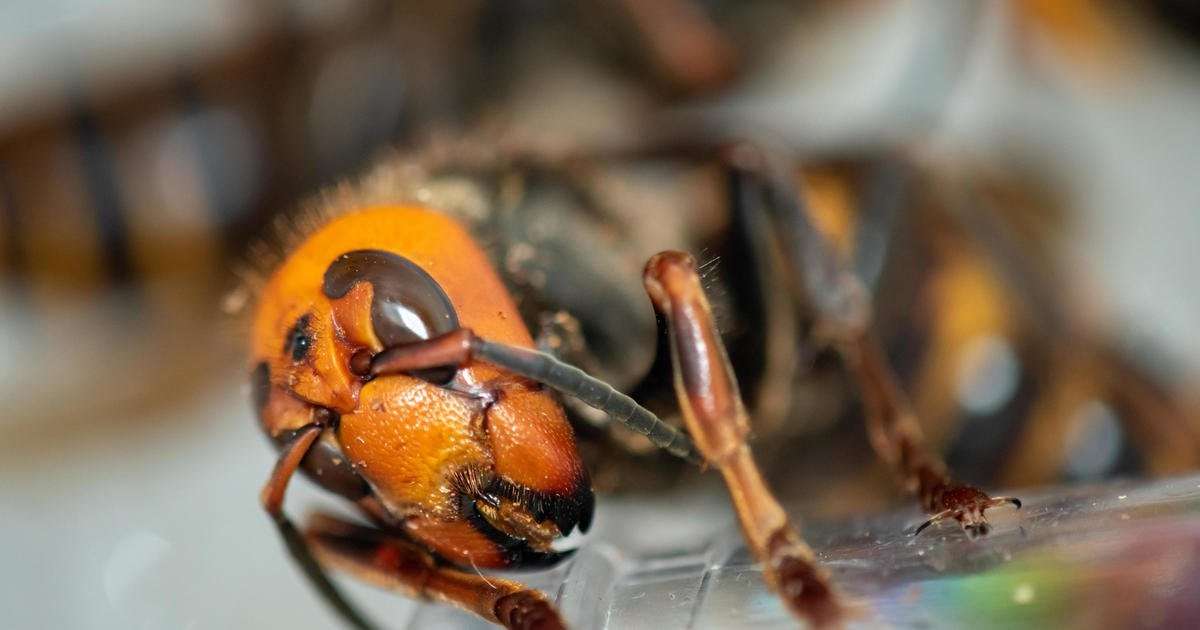Scientists eradicated the first-ever found Asian giant "murder hornet" nest in the U.S. this week, shortly after discovering it. But two queens managed to evade capture — until now.
On Wednesday, Washington State Department of Agriculture (WSDA) officials were able to cut down and remove the entire tree that once held the first known Asian giant hornet nest. When they cut into the tree to find the nest, scientists discovered two hornet queens. They posted a video showing the insects crawling inside vials.
WSDA said it is unclear whether both are virgin queens or if one is a virgin queen and one is the old queen, which started the nest.
Get Breaking News Delivered to Your Inbox
Workers from the department had initially used a vacuum on October 24 to capture and kill 85 Asian giant hornets in the nest found in Whatcom County. They captured 13 live hornets for observation and research.
In a blog post on Friday, WSDA announced that entomologists gathered to split open the log, which had been kept in a walk-in cooler to immobilize any hornets that were still alive. The department also shared new photos of the hornets and their nest.
The team pumped more carbon dioxide, used in the initial eradication, into the tree, then used a circular saw to cut partially through one side of the tree before splitting it open with a wedge and sledgehammer.
Scientists worked quickly to collect any remaining Asian giant hornets, many of which were still alive but not flying. WSDA reported both new queens and workers were in the nest, adding that many adult specimens were collected for further research.
"At least between the time we conducted the eradication last Saturday and now, there were new queens emerging within the nest," spokesperson Karla Salp said. "There may have also been queens that emerged before we got there. We just don't know at this point."
While examining the nest, the team found several larvae in the comb and white-capped cells with developing adults. Additionally, they uncovered the radio tag that led them to the nest in the first place — which appeared to have been chewed off.
Scientists said they plan to continue analyzing the contents of the nest over the next several days, as well as actively trying to trap hornets that may still be in the region.
"There is still time to find another nest this year," WSDA said, adding that citizen scientist trappers in Whatcom, Skagit, Island, and San Juan counties are keeping their traps up until at least Thanksgiving.
The first Asian giant hornet in Washington state was spotted in December 2019, but it wasn't until July of this year that officials were able to trap one. Several more have since been trapped, all in Whatcom County, using a network of traps set up by both WSDA staff and hundreds of citizen scientists.
The Asian giant hornet, Vespa mandarinia, is the world's largest hornet species. They have large yellow-orange heads, prominent eyes and are between 1.5 to 2 inches long.
They pose a serious threat to honeybee populations, especially in late summer and early fall. Murder hornets can decapitate thousands of bees and destroy hives in a matter of hours — known as their "slaughter phase" — which would also have a catastrophic effect on the crops that the bees pollinate.

Catahooo on November 1st, 2020 at 07:12 UTC »
From Wikipedia
Funkamateur on November 1st, 2020 at 06:51 UTC »
Reading the entire article, they don't explain the nest. So, not only will they decimate bee populations, but they destroy trees, too. Burrowing Murder Hornets.
https://katu.com/news/local/new-video-shows-scientists-digging-out-murder-hornets-from-nest
cigs_and_coffee on November 1st, 2020 at 05:41 UTC »
Great, now they can interrogate them.